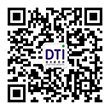Guidelines for the Application of Test Reports for GB/T 19865-2024 Safety of Ele
Date:2025-07-09 09:34:29 Classification
:【question】 Visits:
Guide to the application of GB/T 19865-2024 test report for electric toy safety
I. Test process steps
1. Application and evaluation
- Fill in the application form and provide product information (such as name, model, material, circuit design, battery type, etc.).
- A third-party organization evaluates the applicable standards (GB/T 19865-2024) and test items to confirm whether international standards such as EN62115 and IEC62115 need to be supplemented.
2. Sample preparation
- Provide at least 2 test samples (need to simulate actual use status and be sealed intact).
- Submit technical documents: circuit schematic, PCB layout, key safety parts list, manual and warning design draft.
3. Laboratory test
- Core test items:
- Electrical safety: input power deviation, temperature rise test, electrical strength, insulation performance, battery safety (such as USB port short circuit test).
- Mechanical and physical properties: mechanical strength of the shell, connection strength, speed limit of electric ride-on toys.
- Electromagnetic compatibility: New EMC test requirements (such as radio frequency interference test for wireless toys).
- Chemical safety: migration of specific elements (lead, cadmium, etc.), phthalates, heavy metal detection.
- Wireless and data security: privacy protection of smart toys, data transmission encryption.
4. Data analysis and report issuance
- After the test is passed, the laboratory will issue a test report with CMA/CNAS certification, which must include the test method, results and compliance conclusions.
2. Testing cycle and cost
- Cycle: about 5-7 working days
- Cost: A single test is about 1,000 yuan, and the cost of complex products (such as those containing smart modules) is higher.
3. Required information
1. Basic documents
- Product manual, nameplate, circuit diagram, PCB layout.
- List of key safety parts (such as batteries, transformers, switches, etc.).
2. Technical documents
- Battery charger design instructions, wireless module parameters, data privacy protection plan (if applicable).
3. Sample requirements
- Simulate the actual use status to avoid pretreatment or damage.
IV. Precautions
1. Standard update
- The new standard adds battery safety (such as button battery anti-drop test), EMC requirements and wireless data security clauses, which need to be paid special attention.
2. Regulatory connection
- If exported to the EU, it is necessary to comply with EN62115 at the same time, and if exported to the United States, it is necessary to supplement CPSC 16 CFR and CPSIA requirements.
3. Test extension
- Toys with coatings or printed patterns need to add azo dyes and solvent residue tests.
4. Report validity period
- If the product design, raw materials, production process and regulations have not changed, the report is valid for a long time, but it is recommended to update it every 1-2 years to cope with regulatory changes.
V. Recommended testing agency
- Dezewei Testing: Good at EMC and wireless safety testing of complex toys (such as smart toys).
Summary
GB/T 19865-2024 test reports need to cover electrical, mechanical, chemical and emerging safety areas (such as data privacy). It is recommended to choose a laboratory with CMA/CNAS qualifications and dynamically track standard updates. If you need a customized solution, you can contact the above institutions for technical support.




 Shen Gongwang Security: 44030602006947
Shen Gongwang Security: 44030602006947